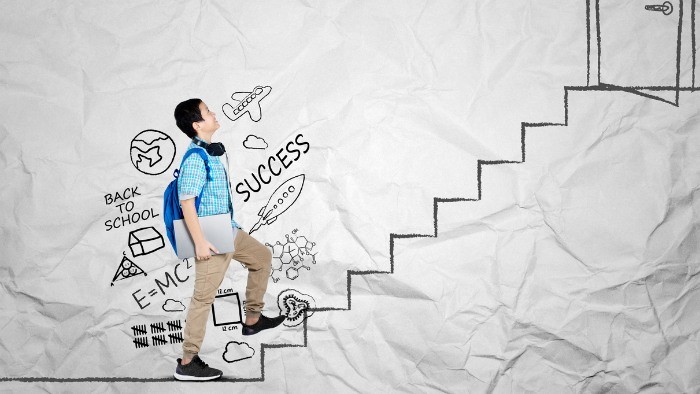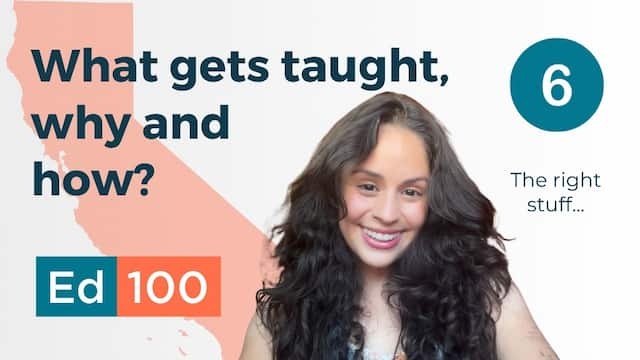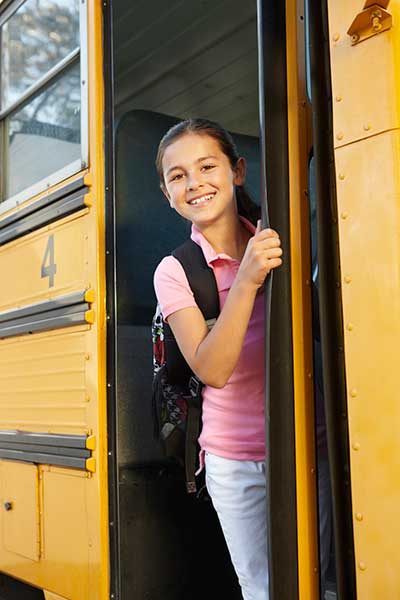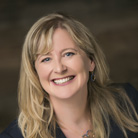
In education, the arts are important for all children, not just those with special talent.
In This Lesson

Is art education important?
Does California neglect arts education?
Is art education a good use of school time?
Who teaches art in school?
Why don't schools have art and music?
Is California behind in providing arts in school?
Do standards exist for arts education?
What is the Art Gap?
How can we raise money for the arts in school?
Is arts education equitable?
▶ Watch the video summary
★ Discussion Guide
Art is for everybody
The arts are crucial to how children learn. Teachers know that knowledge sticks more easily when it is beautiful, or compelling, or funny. The comedian Steven Wright made the point memorably: "Why is the alphabet in that order? Is it because of that song?" It's a good joke with a surprising kernel of truth — and the song is global.
Knowledge sticks more easily when it is beautiful, or compelling, or funny.
Art is inherently creative. Teachers are constantly finding new ways to deploy creativity as part of the learning process, integrating arts into learning lots of things, like US history and science. The arts can help students understand math, and memorize things including the quadratic formula.
Growing evidence suggests a connection between participation in Visual and Performing Art (VAPA) programs and academic results. Arts education can improve students’ ability to communicate effectively. Experiences in music or other performance can teach the importance of teamwork and help students develop self-confidence. Other findings point to a connection between arts programs and social-emotional development.
Does California neglect arts education?
For many years, California's schools had among the weakest art education programs in America. It will take time to reverse the damage.
California voters demanded change in 2022
This long-lasting weakness has to be understood partly as a matter of local choices. Each school board in California has a lot of independent power to decide how their schools deploy time and resources. Districts and unions negotiate contracts and set budgets together. In the years before 2022, districts could have hired arts educators. They could have invested class time and school space toward the arts. But most didn't. Instead, they focused on other priorities.
In 2022, California voters forced the issue.
Some still refer to this law as Prop 28, its number on the ballot in 2022. Resist the temptation! Ballot numbers are recycled with each election, which can lead to confusion in subsequent elections. Even the number 13 hasn't had its jersey retired, so 28 will have to get in line.
The Arts and Music in Schools Act, a voter initiative, took the issue off the local negotiating table by making a certain level of spending on arts education mandatory and permanent for the whole state. The popular measure sets aside about a billion dollars per year (roughly $170 per student in 2023) that must be used specifically to pay art teachers (more details below).
The future for arts education seems relatively bright in California, given the precedent created by the initiative. But it's important to understand the history of the issue — both for its own sake and as a case study in advocacy.
How did advocates protect arts education in California?
California law requires arts instruction in grades 1-6 and arts courses in grades 7-12. This isn't new, but for a very long time districts simply ignored the requirement.
California's main policy for how funds flow from the state to the classroom is the Local Control Funding Formula (LCFF), which is explained in Ed100 Lesson 8.5. Under LCFF, school districts have a lot of power to set local priorities and make local choices about how to use funds. Until 2023, it was up to each individual school district to decide whether and how to spend funds on arts education. In practice, it was essentially optional.
Some districts chose to fund arts, music and athletics as part of their core budget. Some hired tenured teachers for these purposes. But many districts didn't. They reserved little or no core funding for the arts, perhaps hoping their school community would rally to the cause and raise extra money. Rather than hiring tenured teachers, some districts preferred to provide arts experiences through third-party contracts that they could easily eliminate or downsize if funding for education decreased.
Over time, the overall effect was easy to predict: California fell dramatically behind other states in providing arts education opportunities for students.
Data helped win the argument
Advocates for the arts realized decades ago that it's hard to make a case for investing in the arts without data. The simplest quantifiable evidence was the declining amount of time that schools committed to arts education.
As schools focused on math and English, time spent on arts instruction measurably declined.
In California, participation in music classes dropped 46% from 1999 through 2004. During the recession that began in 2008, many schools nearly eliminated arts education from their curriculum, continuing a decades-long decline. A statewide study of arts education in California in 2007 indicated that 89% of K-12 schools did not offer even a single standards-based course of study in the visual arts, music, theater, and dance.
California could ill afford this decline. In 2007, a study of instructional hours per year for music and visual arts in elementary schools documented that California children were spending less time on the arts than children nationally back in 1999-2000. Followup surveys showed little improvement, suggesting that once art programs disappear from a school they can be difficult to bring back.
Art program advocates warned that the declining emphasis on arts education was creating a generation of teachers and parents with a narrow view of the arts in education. A 2015 report, A Blueprint for Creative Schools, outlined strategies to reverse the trend, making the arts a core part of education for all students.
Educational standards for arts education
In 2017, California adopted educational standards for arts education (finalized in 2019) to clarify the kinds of instruction and experiences that should be available to students. As the standards were being developed, advocates for arts education gathered data to make the case for change. They found that only a small percentage of students were receiving any arts education at all. Access to arts education was wildly inequitable.
Because the arts data system extended to the school level, it was easy to document gaps. Classes in the arts tended to be most available to students in more-affluent communities. The pre-pandemic 2019 study showed that over half of students in grades six and up weren't enrolled in any arts at all. Participation in arts followed a familiar pattern: schools where more families are poor were far less likely to provide students with access to education in the arts. The patterns often called achievement gaps could be seen as art gaps, too.
The data systems developed to document art gaps are still in operation as of this writing. If you are making a case for arts education in your school or district, start by exploring the data already collected. (As of early 2024, the Project had data for 2021-22 showing a statewide ratio of 631 students per arts educator, with a lot of variability.)
How does California's arts funding work?
The initiative that guarantees funding for arts education in California was cleverly constructed. It didn't raise taxes. Instead, it re-prioritized the funding system. Under this measure, California sets aside about $1 billion each year from the state general fund, directing it to school districts with requirements about how the money must be used. The funding supplements other money that the state is constitutionally required to provide to public schools.
As mentioned above, districts have the power to spend additional money on arts education. The guaranteed funding is meant to serve as a floor, not a ceiling.
|
How Proposition 28 (2022) funds arts education |
|
|---|---|
|
Arts education funding is protected |
Each year, all K-12 public schools get an additional 1 percent of the required state and local funding (known as Prop98 funds) received the year before. In rough terms, this comes to about $1 billion — in the neighborhood of $170 per student. (2022 estimate) This is above the constitutionally required amount of funding for public schools and community colleges under Proposition 98. The legislature can reduce this funding when it provides less than the constitutionally required funding for education. The reduction in funding for arts education can't be more than the percentage reduction in total funding to public schools and community colleges. |
|
Arts funding is mostly based on enrollment. |
Of the arts funding to PreK-12 public schools under this measure, 70% is allocated to districts on the basis of enrollment. The other 30% is based on schools' share of low-income students enrolled statewide. Local governing boards may use up to 1 percent of this funding for administrative expenses. |
|
Funding must be used primarily to hire arts staff. |
At least 80 percent of the additional funding for arts under this measure must be used to hire staff. (School districts and charter schools with fewer than 500 students are exempt from this requirement. Larger districts can apply for waivers.) Districts must certify that money for arts education was spent in addition to existing funding for this purpose. Funding can be used for dance, media arts, music, theater, and various types of visual arts (including photography, craft arts, computer coding, and graphic design). Districts have three years to spend the funds they receive each year for arts on a use-it-or-lose-it basis. The state department of education may reallocate unspent funds to all schools in the following year. |
|
Principals determine how funds are spent. |
The principal of a school site (or the program director of a preschool) develops a plan for spending the funding. |
|
Annual data reporting is required. |
Local governing boards must certify each year that funding intended for arts education was spent for that purpose. They must post on their website a report of how funds were spent, including type of arts education programs, number of staff employed, number of students served, and the number of school sites providing arts education with the funding received. This report must also be submitted to the state department of education (CDE) and made public on the department’s website. |
More for arts education, maybe?
The funding included in the initiative isn't meant to serve as a ceiling for arts education. Additional billions were allocated in the post-pandemic boom, but then pulled back as the market swooned. The arts funding initiative provided protection for a core amount of arts spending that seems likely to be durable. (See our blog post on the 2024-25 budget.)
How arts education promotes equity
Increasing arts in schools helps close achievement gaps because it tends to increase students' level of engagement in their education.
A study of graduation rates in New York City found that increasing access to arts instruction helped turn around struggling schools and keep students engaged.
A set of multi-year studies using data from the Department of Labor and the Department of Education corroborate the connection between arts education and academic achievement, showing a "relationship between arts engagement and positive academic and social outcomes in children and young adults of low socioeconomic status."
The science and junk science of arts education
Creativity is sometimes misrepresented as right brain thinking. As science, this is now known to be junk, but for years people thought it was true, and it was taught in education schools. The idea that it's a good idea to incorporate creativity into learning is sound.
|
Questions to ask about arts education in your school: |
|---|
|
Does your school and district have a quality arts program, including an arts education master plan? The Strategic Arts Education Planning Guide is a useful starting place. |
|
Are the arts included in professional development for Common Core State Standards and Next Generation Science Standards? (Are the arts picking up STEAM?) |
|
Are the arts included in your district’s Local Control and Accountability Plan? Some strategies: (LCFF Toolkit, California Alliance for Arts Education) |
|
Is your district using LCFF funds to support arts education for low-income students, English-Language Learners and foster youth? See: Arts and Achievement for Low Income Students |
|
Does your school district use its Title I money to support arts education? Title1arts.org offers examples. |
|
Are the arts used to engage parents? The National PTA’s Arts Education with a Stronger Family-School Partnership is a great resource. |
The next lesson examines another part of the school experience that many students find enjoyable: physical education.
This lesson was last updated in January 2024.
CHAPTER 6:
The Right Stuff
-
The Right Stuff
Overview of Chapter 6 -
Grade-Level Standards
What is the Common Core? -
Is School Challenging Enough?
Academic Rigor -
Literacy in California
Ensuring All Kids Can Read, Write and Speak English -
STEM Education in California
Science, Technology, Engineering and Math -
Why Are Tests Important?
Why Tests Matter and How They Work -
Technology in Education
Tools for Teaching and Learning -
Student Engagement
How to Make School Interesting -
Arts Education
Creativity in California Schools -
P.E. and School Sports
How Does Sweat and Movement Help Learning? -
Field Trips
Beyond the Classroom -
Career Technical Education
Vocational Learning, Dual-Enrollment, and Internships -
Service Learning
Civic Engagement and Helping Others -
Teaching Soft Skills
Social-Emotional Learning -
Can Values and Habits be Taught?
Character Education -
Civics, History and Geography
How Do Kids Learn About Their Country and the World? -
How do Kids Become Bilingual?
World Language Learning in California Schools -
Financial Literacy in California
Learning to Earn
Related
Sharing is caring!
Password Reset
Search all lesson and blog content here.
Login with Email
We will send your Login Link to your email
address. Click on the link and you will be
logged into Ed100. No more passwords to
remember!














Questions & Comments
To comment or reply, please sign in .
John Jersin January 6, 2024 at 1:33 pm
Jeff Camp - Founder January 10, 2024 at 6:26 pm
Jeff Camp - Founder January 22, 2024 at 10:37 am
Will there be more exceptions ahead?
Carol Kocivar December 6, 2023 at 3:06 pm
Create CA and the Arts Education Data Project
Find the number of Full-Time Equivalent (FTE) arts education teachers by school level, district, county, and statewide.
https://createca.org/california-arts-education-data-project/
Carol Kocivar January 9, 2023 at 5:06 pm
Employing a randomized controlled trial with 42 elementary and middle schools in Houston, Texas, we find that randomly assigning arts educational opportunities reduces disciplinary infractions, improves writing achievement, and increases students’ emotional empathy.
https://onlinelibrary.wiley.com/doi/10.1002/pam.22449?utm_source=The+Hechinger+Report&utm_campaign=279e06a5b6-EMAIL_CAMPAIGN_2022_12_19_05_30&utm_medium=email&utm_term=0_-279e06a5b6-%5BLIST_EMAIL_ID%5D
Jeff Camp - Founder December 9, 2022 at 2:34 pm
Carol Kocivar August 3, 2022 at 8:28 pm
The state 2022-23 Budget provides $3.6 billion one-time funds that can be used for arts and music programs, obtaining standards-aligned professional development, acquiring instructional materials, developing diverse book collections, operational costs, and expenses related to the COVID-19 Pandemic.
Carol Kocivar June 5, 2022 at 4:09 pm
https://lao.ca.gov/handouts/education/2022/Initiative-Statute-Provides-Additional-Funding-for-Arts-and-Music-Education-in-Public-Schools-060122.pdf
Carol Kocivar May 23, 2022 at 11:25 pm
Mateo Meza June 28, 2021 at 10:08 pm
Anna Meza February 8, 2021 at 10:34 am
Carol Kocivar February 28, 2021 at 8:19 pm
Carol Kocivar February 8, 2021 at 10:04 am
While California requires arts instruction in grades 1-6 and arts courses in grades 7-12, it does not require schools to commit any particular level of funding for arts education.
Schools are required to provide arts 1-6 and 7-12.
In the early grades it is instruction and in the older grades it is courses.
Roxanne Crawford June 10, 2020 at 8:56 pm
Jamie Kiffel-Alcheh November 13, 2019 at 6:47 am
Jamie Kiffel-Alcheh November 13, 2019 at 6:44 am
Caroline May 13, 2019 at 2:26 pm
Brenda Etterbeek May 9, 2019 at 1:26 pm
Caroline May 15, 2019 at 2:07 pm
Carol Kocivar November 4, 2017 at 10:16 am
Lisette October 3, 2017 at 4:45 pm
Carol Kocivar September 19, 2017 at 11:31 am
or Spanish:
http://downloads.capta.org/smarts/JobDescriptionforArtsEducationChairman_Spanish.pdf
Carol Kocivar July 1, 2017 at 5:46 pm
https://www.psarts.org/TO-GO/
Jeff Camp March 20, 2017 at 4:37 pm
Carol Kocivar February 20, 2017 at 10:46 am
PTA's School Smarts program helps parents make the connection between arts and learning. Here are five videos you can use at your parent meeting:
- Family Values Art Project
- Pinwheel Art Project
- Mask Art Project
- Hat Art Project
- Quilt Art Project
Carol Kocivar October 27, 2016 at 3:16 pm
The newly launched California Arts Education Data Project now analyzes and reports school-level data on arts education courses and grades 6 through 12 enrollment. You can review school-level, district, county and statewide data on their interactive dashboard.
http://www.createca.dreamhosters.com/artsed-dataproject/
Key Findings 2014-2015
* Thirty-eight percent of all students participated in arts education courses. This represents more than 1.2 million students.
* In 2015, 26% of students had access to one or more arts discipline in schools. This represents 12% of schools offering all four arts disciplines. There were nearly 2.3 million students who did not have access to all four arts disciplines.
Caroline August 15, 2019 at 6:04 pm
Albert Stroberg May 1, 2016 at 8:12 pm
How do kids do 10 years later?
Carol Kocivar April 23, 2016 at 4:17 pm
Carnegie Hall commissioned a new research paper “Why Making Music Matters."
"The more we learn, the clearer it becomes that live music can play a powerful role in ...development from the very start."
Find out more...
http://www.carnegiehall.org/BlogPost.aspx?id=4295019679&utm_source=mail2&utm_medium=email&utm_campaign=wmi-23579&utm_content=wmiblast-021216&sourceCode=23579
Jeff Camp - Founder November 8, 2015 at 4:18 pm
shadowzwench April 27, 2015 at 12:33 pm
Carol Kocivar - Ed100 February 17, 2015 at 3:48 pm
The California Alliance for Arts Education takes a look at how five districts invested in arts education in their 2014 LCAPs to achieve a variety of outcomes, including student engagement, a broad course of study and closing the achievement gap between English Language Learners and other students.
Here is the link:
http://www.artsed411.org/files/5%20Examples%20of%20Arts%20Ed%20in%20District%20LCAP%20012815.pdf
Carol Kocivar - Ed100 February 2, 2015 at 12:44 pm
State Schools Chief Tom Torlakson’s Arts Education Task Force Submits Recommendations to Restore the Arts to California Classrooms. You can find " A Blueprint for Creative Schools" here: http://createca.net/?p=272